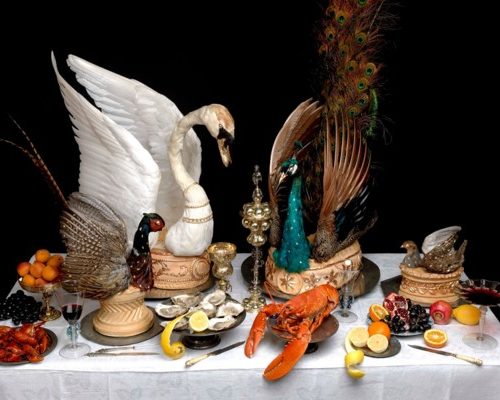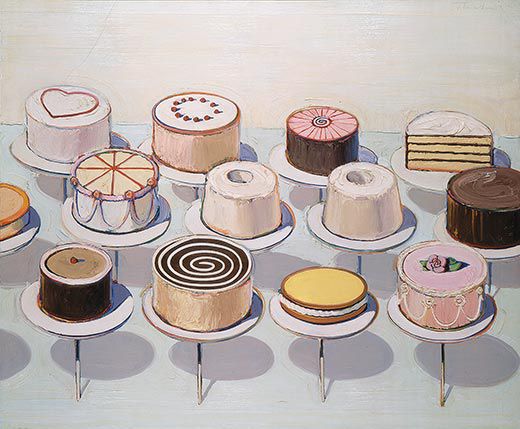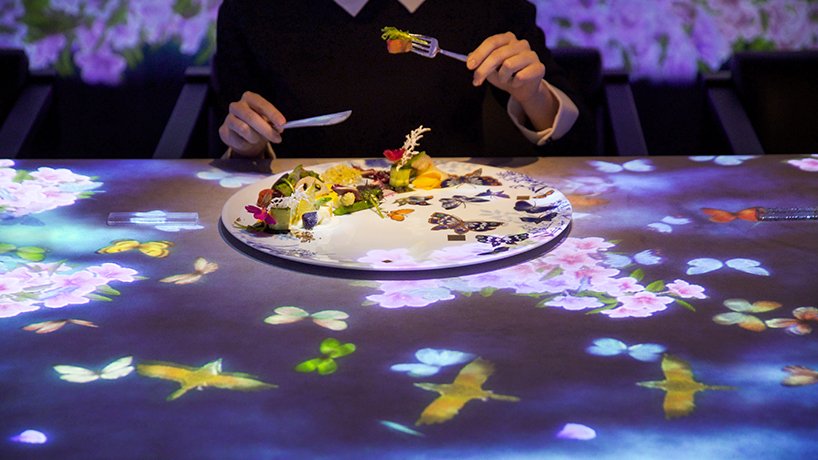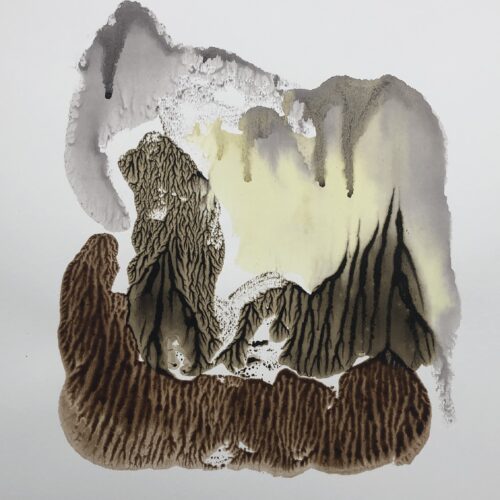
Food for thought
In need of inspiration? Try swapping the studio for the kitchen or making confectionary rather than clay your modelling material of choice.
Food has always played a role in art (and no, I’m not talking about dining-obsessed Instagrammers). From the Renaissance artist Giuseppe Arcimboldo’s witty portraits composed of fruits and vegetables and the beautiful still life paintings of the Dutch Golden Age, through to Wayne Thiebaud’s iconic painted pies and cakes in the pop art era, artists have used food to express their pleasures and preoccupations.

Today, in a bid to challenge the conventional boundaries of traditional disciplines, artists experiment with cheese to craft sculptures and use 3D printers to create moulds for fantastically complex (and delicious) geometric cakes. The proliferation of food art in contemporary experience-based and immersive art practices has also seen artists open restaurants as creative projects and, as in the case of the Australian artist Elizabeth Willing’s 2010 installatio Goosebump, stick over 300 pfeffernüsse biscuits to a gallery wall with royal icing and then invite visitors to bite them off.

We are defined by what we eat and what we don’t eat. When, where, why, how and with whom we eat are key social and cultural identifiers, so when I was asked if I would like to write a piece for the catalogue accompanying the show Feast & Fast: The art of food in Europe, 1500-1800 at the Fitzwilliam Museum in Cambridge, I jumped at the chance. Food and art, what’s not to love?! I quickly discovered that objects and images don’t just help us understand the history of food and eating. They also have an emotive, revelatory function – they can activate multisensory experiences and trigger memories, leaving us feeling glutted or hungry for more. There are a variety of things on the menu in the exhibition, which demonstrates that many of our concerns about the dangers of sugar, overeating and the nature and quality of food supply chains are not new. However, the idea that food can be a work of art (and tell a story) is brought to life by Ivan Day’s historically accurate reconstructions of a Jacobean sugar banquet and a heavily-laden Baroque feasting table.

Food can be presented as an aphrodisiac, as a display of status and power, as a memento mori or as medicine (which, as all savvy OCA students who have spent long periods of time working on an assignment will know, extends to ‘brain foods’ like broccoli and avocado that boost concentration). But it’s also worth looking afresh at the gastronomic contents of an image and thinking about food as art, as a legitimate medium in the world of design. If you don’t know where to take your creative journey, start by getting out those recipe books.
Image Credits:
Wayne Thiebaud, Cakes, 1963. Courtesy of the National Gallery of Art, Washington D.C.
MoonFlower Sagaya Ginza (interactive restaurant), Tokyo, Art by teamLab. © teamLab
Ivan Day, Recreation of a Baroque feasting table. Photo by Amy Jugg and Katie Young © The Fitzwilliam Museum, Cambridge
|
|






